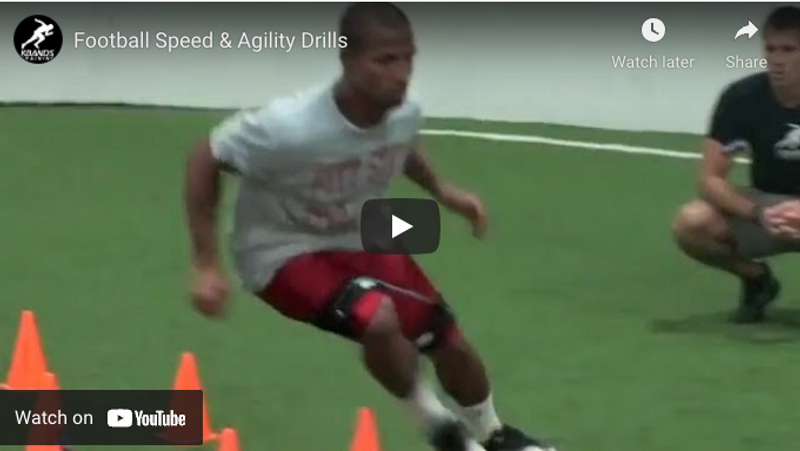Football Agility | Quick Lateral Moves
Every football team uses bag drills to gain speed and agility. A football player should use these drills to maximize their potential on the field. Just like any other drill, a football player must perform a proper warm up routine to prevent injury and get the most benefit out of the drill. This drill helps the football player gain strength as well as the ability to fire the quick twitch muscles in the legs. All the muscles from the feet to the glutes are important when working on speed. Developing these muscles will make any football player an overall better athlete and performer on the field. Refer to the video below for an example of how to run through the bag drills using Kbands. A football player will increase their speed and agility to compete at a higher level by using this drill and Kbands resistance.
Football Drills | Bag Drills | Run Fast
Football players must have speed and quickness for football and while training to run fast. Speed and agility are two concepts that are related but are also different. Speed deals with a football player's ability to run in a certain direction as fast as possible. Agility is a football player's ability to change direction or start and stop quickly with precision. When training to develop these attributes, a football player must work to develop quick feet as well as fast legs. The hamstrings, glutes, quads, calves, and hips must all be able to continuously fire with power to increase a football player's speed. The hip flexors become a big component in running. These muscles must be developed because they have to fire every time the leg is lifted.
Forward Bag Drills | Football Tactics | Agility
Typically football bags will be used when setting up the bag drill, but anything can take their place such as the cones that are shown in the video above. There will be 6 rows of cones, or 6 bags that are placed in a line. Each set of cones should be approximately 2 feet apart. The football bags are typically about 36 inches long and 10-12 inches high. It is important to make sure the cones are at this same length. After the line of bags or cones are set up, place two cones 10-15 feet in front. The 6 rows of cones will allow the football player to get out and sprint.
Training to Run | Agility Footwork and Arm Position
Running mechanics are a good starting point for improving speed. The shoulders and hips should be perpendicular to the desired direction of running. Make sure to maintain a straight torso with relaxed shoulders. The arms and legs need to be at a 90 degree angle. Arm movement is a crucial part of being able to run with speed and agility. Keep the arms moving in a forward direction and do not let them go above your vision. The hands must never cross the plain of the football players chest. The proper running form is efficient by moving all energy forward with little to no wasted movements. Be sure to lift the knees high with strength and power. The hip flexors fire to propel the leg forward when the knees are brought up. Hip flexor strength can improve running speed if properly trained. With the added resistance of Kbands, the hip flexors will be strengthened to increase stride length and help prevent injuries to the hips. Developing speed takes time, but with the proper running mechanics every step of the process will be faster and easier.
Running Workouts | Football Agility Drill
This drill will consist of 6-8 repetitions while using Kbands for added resistance. Keep a good center of balance and make sure to plant on the outside leg and shift back to the inside leg before taking the first step. Football players should not make the first step with their front leg on the lateral shuffles. They must plant on the outside leg, and then shift their weight to the inside leg. At this point the first step should be the outside plant leg. Refer to the video above for a visual of the weight transition. Be conscious not to plant too far out or too far in by the cones. This will result in a loss of balance and quickness and create potential injury. Next, complete 4-6 repetitions without the resistance. Football player's legs will feel light and free without the resistance. This is the main focus of training with Kbands. Make sure when transitioning to the non-resisted reps to work for faster legs for maximum benefits. The muscles recruited will allow football players to sprint while firing more muscles than normally used. This window of opportunity will optimize body potential.
The added resistance of Kbands has many benefits during this drill. Kbands will increase stride length, strengthen hip flexors, glutes, hamstrings, and quads. They will also help develop a better center of balance, increased lateral movement, hip stability, and quicker feet. The development of these strengths will increase performance on the field as well as help prevent injuries.

